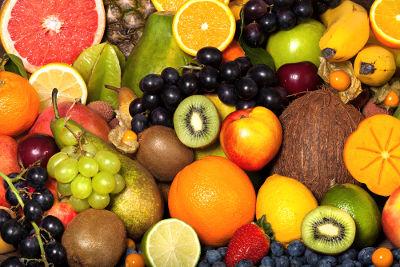
Knowing the food we eat is certainly a good habit.
The fruits of plants are not all the same, are divided into different types and each of them generally has distinct nutritional characteristics: let's discover those of peponidia, apples and compound fruits.
Peponidae: characteristics and properties
The term peponide is usually indicated the fruits of the species belonging to the Cucurbitaceae family.
Dimensions, shape and characteristics of the peel are variable, just think of the difference between a carousel and a giant pumpkin or between a round zucchini and a moon and stars watermelon.
It is a genus of fruit which tends to have a central cavity, where the numerous seeds are concentrated; except in rare cases, the pulp is sweet, or to the limit watery.
As mentioned, the peel can vary, from edible, like that of cucumbers, to woody, like that of pumpkins. In the group of peponids, we therefore find the pumpkins, the melons, the watermelons, the zucchini, the cucumbers, the bitter melon, and the fruits of other exotic plants that have in common the climbing tendency, which gives the name to the family: "corb", in Sanskrit, means "to twist".
What do these fruits bring? A lot water, first of all; after that Vitamins like K, A and those of group B, flavonoids anti-inflammatory, lignans considered useful in the prevention of various cancers (especially those that attack the brain), fiber which supports digestion, fights the fermentation of foods in the intestine and therefore helps to have good breath.
Autumn and its forgotten fruits
Pomi: characteristics and properties
The term pommel it has always been attributed to false fruits of the Rosaceae family. Why the name of false fruit? Botany explains that in this case, the real fruit is not made up of the pulp, which accounts for a large part of the mass of the knobs, but from the so-called torsolo and contains i semi; the pulp in reality would be only the inflorescence devoid of fertilization that is filled with substance in growth and maturation.
Generally the peel is thin and edible, with some exceptions; the pulp is sweet, although it can sometimes manifest itself as acidic; the seeds, as mentioned, are small and enclosed in the core. Among the apples we can find very famous and consumed fruits, just think of the apple, To pear, To quince; but we can also add to the list other less known fruits, or rather, set aside a little in oblivion: the Japanese medlar, medlar, azure, hawthorn, dog rose, rowan.
The old proverbs tell us about medicinal properties and good taste of the apples, their typical sweetness and their benefits: it seems that the apples increase the level of some neurotransmitters able to counteract the onset of Parkinson's disease el 'Alzheimer. Their particularly soluble fibers help fight type 2 diabetes and to lower cholesterol level. The flavonoids contained in the apples seem effective in prevent pancreatic cancer.
Compound fruits: characteristics and properties
Also called aggregate fruits, the compound fruits are a botanical curiosity, more properly called etaerio: it is the development of several fertilized ovaries, which merge into a single fruit.
They are part of different kinds of fruit and they are not a separate group: we find in fact in the drupes, such as and more; l 'ananas, of the Bromeliaceae family, e the strawberry, which turns out to be actually an achene; the list can go on to include i raspberries, mulberry blackberries, wild strawberries, etc.
The fusion of the various ovaries in the form of a cluster or cluster, in the wake of the suggestive English term, can reach different dimensions; in these cases we speak of juicy and fleshy fruits, concentrates of phytonutrients, with small seeds, even if the aggregate reaches a considerable size, such as pineapple.
We have said that compound fruits are generally concentrates of phytocomplexes, often flavonoids useful for many metabolic functions, able to maintain a high level of health and enrich our reserves of Vitamins.
Discover the old and forgotten apples


























